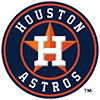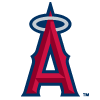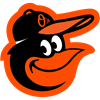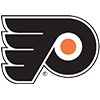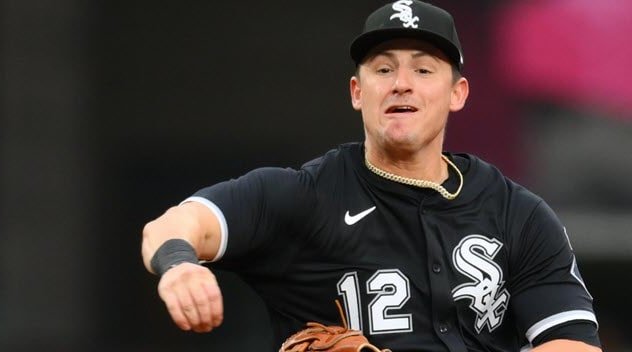One of the intriguing aspects of draft strategy is how to handle catchers. The pool is notoriously weak while the position is prone to injury. What follows is a guide to properly ranking catchers relative to the rest of the field.
Now, more than ever, there's homogeneity within the hitter pool. First basemen and outfielders no longer rule the roost. The first round is dotted with middle infielders and third basemen. Position scarcity is no longer a thing.
Well, almost, as the catcher inventory is historically weak. Further, many believe lower end receivers yield a negative return on investment.
The key to understanding catcher valuation is the concept of useful stats. Not all a player's production, regardless of position, contributes to your team's points-scoring potential. The best way to demonstrate is setting up a two-person league with a four-player pool. We each need a fruit and a color.

If every homer were equal, Apple would be the most valuable, but obviously Green is the logical first pick since the 55 combined homers from Green and Banana exceed the 50 from Blue and Apple. The proper way to consider the above is for Banana and Blue to contribute no useful homers with Green hitting 15 and Apple 10 dingers that count.
While this may seem like an oversimplification, it's an accurate microcosm of the current player pool where fruit represents non-catchers and color corresponds to catchers. Let's expand the home run derby dynamically over the hitting categories. While it's true that
One of the intriguing aspects of draft strategy is how to handle catchers. The pool is notoriously weak while the position is prone to injury. What follows is a guide to properly ranking catchers relative to the rest of the field.
Now, more than ever, there's homogeneity within the hitter pool. First basemen and outfielders no longer rule the roost. The first round is dotted with middle infielders and third basemen. Position scarcity is no longer a thing.
Well, almost, as the catcher inventory is historically weak. Further, many believe lower end receivers yield a negative return on investment.
The key to understanding catcher valuation is the concept of useful stats. Not all a player's production, regardless of position, contributes to your team's points-scoring potential. The best way to demonstrate is setting up a two-person league with a four-player pool. We each need a fruit and a color.

If every homer were equal, Apple would be the most valuable, but obviously Green is the logical first pick since the 55 combined homers from Green and Banana exceed the 50 from Blue and Apple. The proper way to consider the above is for Banana and Blue to contribute no useful homers with Green hitting 15 and Apple 10 dingers that count.
While this may seem like an oversimplification, it's an accurate microcosm of the current player pool where fruit represents non-catchers and color corresponds to catchers. Let's expand the home run derby dynamically over the hitting categories. While it's true that the poorest starting catcher has worse stats than the weakest active non-catcher, they both contribute the same level of useful stats… none. At the other end, the same stats from a catcher compared to a non-catcher in the draft-worthy pool offer your roster greater scoring potential since more of them are useful.
From a valuation perspective, the worst catcher on an active roster earns $1. This is a sticking point for those who believe it's negative. Truth be told, the bottom receiver earns nothing, but auctions require a minimum bid of a buck. In essence, in standard leagues with a $260 budget and 23 roster spots, you're buying only $237 worth of potential production. The first dollar of every player covers the production of the worst player at that position. On the flip side, a catcher with identical stats to a non-catcher is assigned a higher dollar amount than his counterpart, referred to as a scarcity bump.
Regardless of the valuation system deployed, it's integral to set the price of the worst catcher in the draft-worthy pool to $1. This is the first spot-check necessary to make sure a valuation set is logical. In a 12-team league, verify that there are 24 catchers priced at a least $1. In 15-team leagues, confirm the 30th backstop is $1.
Unfortunately, it's not as easy as that. There's a quirk with catcher valuation existing even when accounting for scarcity. In short, the present pricing bump, specifically in mixed leagues, pushes catchers higher than ever before. Per draft rankings for the past few seasons, Buster Posey placed in the Top-10 in mixed leagues. However, when determining end-of-season rankings, the top catcher landed two or three rounds lower, more in tune with when they're drafted.
Obviously, the stat line of the top projected catcher differs from the end-of-season leading backstop. To determine if there's something to this phenomenon, it's necessary to compare apples to apples.
The best manner to examine this is to assume catcher projections were accurate, then replace the true catcher production with the projected numbers, and compute end-of-season earnings. We'll use 15-team, 5x5 rotisserie mixed leagues as our model. Projections will be an average of at least seven respected sources from the 2015 and 2016 campaigns. End-of-season earnings will be determined by the three most common valuation processes: percentage value method (PVM), standings gained points (SGP), and standard deviation (SD).
Two different sets of earnings will be calculated: projected and final. For each of those, earnings will be calculated with and without accounting for catcher scarcity. The top few backstops along with the bottom receiver in the draft-worthy pool will be examined for trends that can be utilized to fine-tune projected catcher pricing and ranking.

While it varies a bit by method, the projected scarcity bump for top catchers was about $15 last season and $11 in 2015 with the last catcher drafted enjoying an $11 increase in 2016 and $9 the previous year.
Here's the data using projected catcher stats in their respective season-ending pools.

The last two seasons, the actual pricing bump is about $7, which is consistent in both seasons across all three valuation methodologies. In other words, even though if process was done correctly, the preseason price for the top catchers in 2016 was about $8 too high and in 2015 it was $4 too much.
There is a tangible reason for this oddity. Prices are dynamic, based on the player's stats, those or replacement level players and the total player inventory. Primarily due to injuries, the nature of the projected pool and final pool are different, most notably in replacement level and total pool contributions. By keeping the catcher stats the same throughout the valuation process, the impact of these two aspects are determined.
Here is the part that needs to be accepted for the ensuing adjustment to be trusted. The pricing relative to the projected plate pool is correct; the $15 and $11 scarcity bumps would be accurate if the rest of the pool performed exactly to their projections. But obviously, they don't. As such, to generate practical bid values and ranking, the top catcher needs to be priced $7 more than a non-catcher with the same production. This $7 emanates from the bottom pair of tables, illustrating catchers earn $7 more than their non-catching colleagues with the same stats.
This dictates the second logical check of a valuation set. After confirming there are ample draft-worthy catchers, identify the top catcher and find the non-catcher with the closest stat line. The above data shows you can choose any of the top options. The catcher should be priced about $7 more than the non-catcher. By convention, the last catcher is priced correctly meaning the alteration of the remaining receivers need to be scaled between $0 at the low end and $7 at the top.
Not all valuation systems have this adjustment. Excel gurus can program a pricing system with this built-in fix. Others must make the adjustment intuitively. Don't worry, it's fine. Projected earnings are an estimate, accurate to within a few dollars either way. It's better to be off by a buck or two with this correction than to use a $13 scarcity bump as an initial starting point when drafting.
There are a couple follow-up points needing to be addressed. What happens to the pricing of non-catchers as catchers are adjusted and what's the impact in other league sizes?
Using the 15-team league as the model, the top catchers lose about $8 (the current $15 bump less the $7 practical increase). This is scaled down to $0 for the last catcher. On the average, the adjustment is $4 per catcher, or $120. There are $180 non-catchers that inherit this loss. On the average, that's 67 cents per player. Depending on round-off, some prices with stay the same, others will go up a buck. Also, keep in mind this adjustment isn't linear. The $1 players stay $1. This means the top-end players see more of the extra budget so it's fine to adjust the very top players up a couple bucks.
With respect to league size, one-catcher leagues need not make any adjustments. The stats of a catcher are worth the same as a non-catcher. In two-catcher leagues, the shallower the league, the bigger the adjustment. The actual scarcity increase in 12-team mixed leagues is $8. The increase in 12-team AL and NL only is about $2, which is usually appropriately accounted for in most valuation systems. So realistically, only mixed leagues need worry. And then, if you're off a buck or so, it's no big deal. Adjust so the top catcher is worth $7 or $8 more than the closest non-catcher in terms of production and you'll be fine.
This article appears in the 2017 RotoWire Fantasy Baseball Guide. You can order a copy here.







